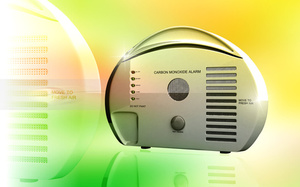Effective April 1, 2012, RCW 19.27.530 requires the seller of any owner-occupied single-family residence to equip the residence with carbon monoxide alarms in accordance with the state building code before a buyer or any other person may legally occupy the residence following the sale.* This requirement applies to all single family residences, including single family homes, condominiums, and manufactured/mobile homes.
The building code (WAC 51-51-0315) requires that an alarm be installed: (1) outside of each separate sleeping area in the immediate vicinity of each bedroom; (2) on each level of the dwelling; and, (3) in accordance with the manufacturer’s recommendations. The building code also requires that single station carbon monoxide alarms comply with UL 2034.** There are no exceptions for properties that do not have fuel-fired appliances or an attached garage. The alarms may be battery operated and can be purchased for as little as $25 from a variety of sources.
The building code also requires that single station carbon monoxide alarms comply with UL 2034. Again, there are no exceptions for properties that do not have fuel-fired appliances or an attached garage. The alarms may be battery operated and can be purchased for as little as $25 from a variety of sources.
In addition, effective April 1st, the building code requires a property owner to install carbon monoxide alarms when alterations, repairs or additions requiring a permit occur, or when one or more sleeping rooms are added or created. There has been a requirement to install carbon monoxide alarms in new construction since January 1, 2011.
What exactly is carbon monoxide and why are alarms necessary?
Carbon monoxide (CO) is a poisonous gas that kills approximately 500 people in the United States every year. Carbon monoxide killed over 1,000 Washington residents between 1990 and 2005. You cannot hear, taste, see or smell carbon monoxide. In many cases of reported carbon monoxide poisoning, victims were aware they were not well, but became so disoriented that they were unable to save themselves by either exiting the building or calling for assistance. Young children and household pets are typically the first affected. Carbon monoxide alarms are intended to trigger at carbon monoxide levels below those that cause a loss of ability to react to the danger of carbon monoxide exposure.
Click on the image above for additional information.
____________________
* RCW 19.27.530 was adopted in 2009. However, in WAC 51-51-0315, the building code council provided an exception for owner-occupied dwellings. That exception will be deleted from WAC 51-51-0315 on April 1st, which gives effect to the point of sale requirement in RCW 19.27.530.
** UL is a global independent safety science company. UL 2034 is the standard for safety of single and multiple station carbon monoxide alarms.

